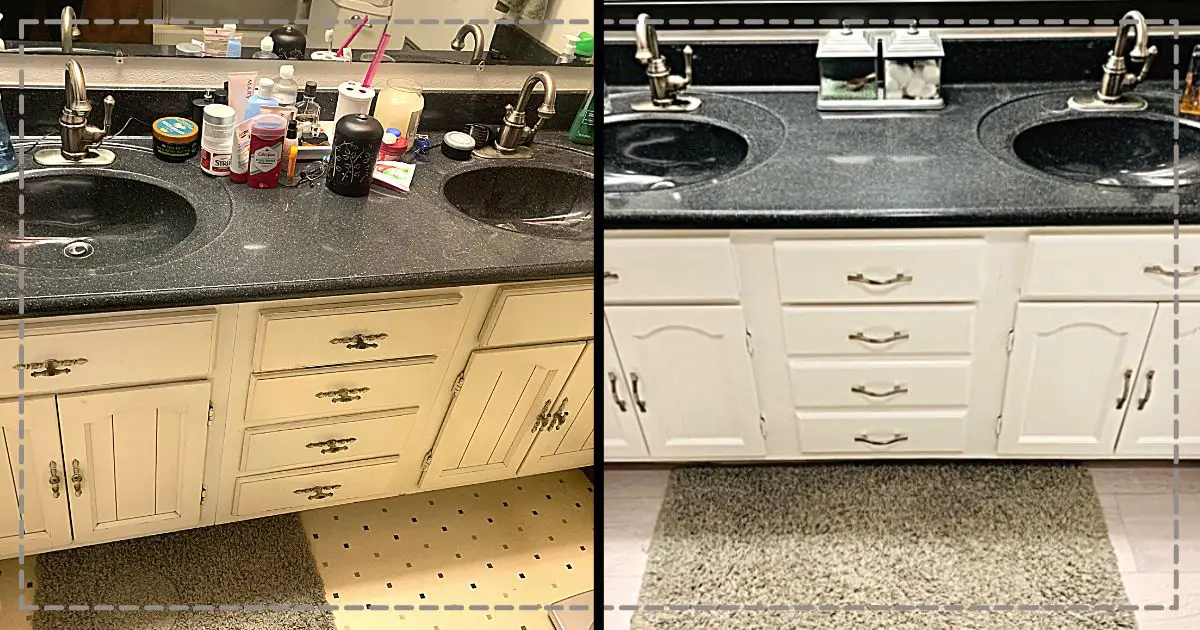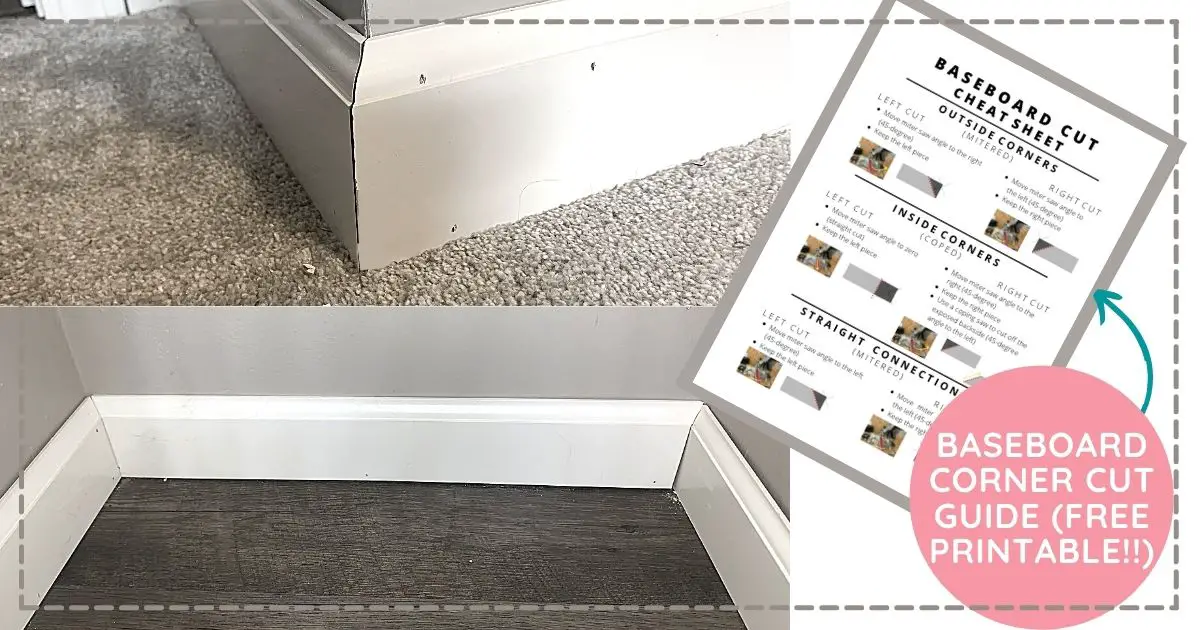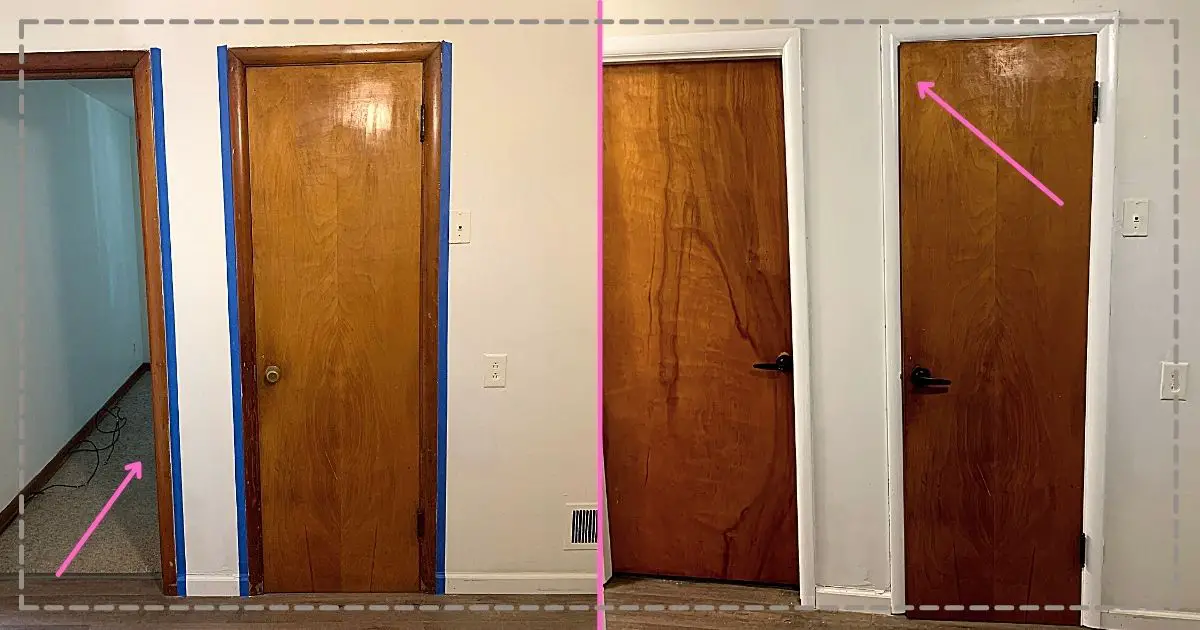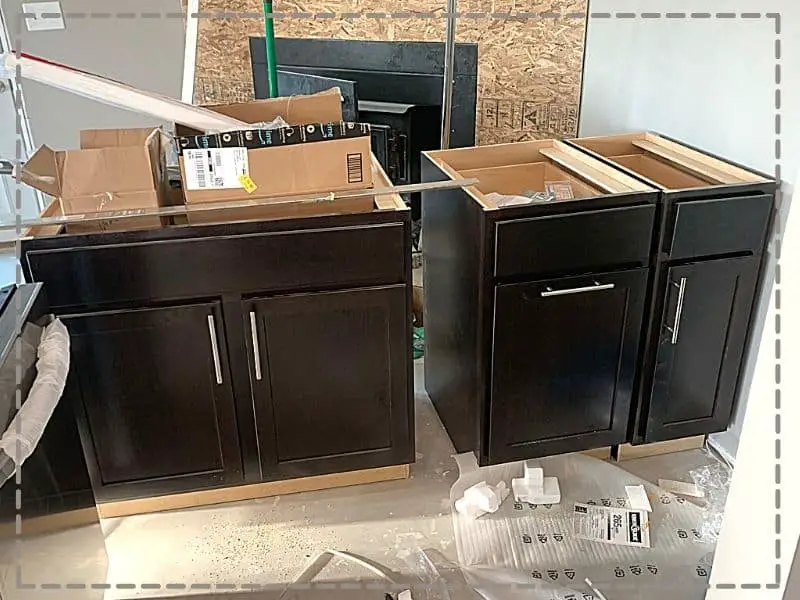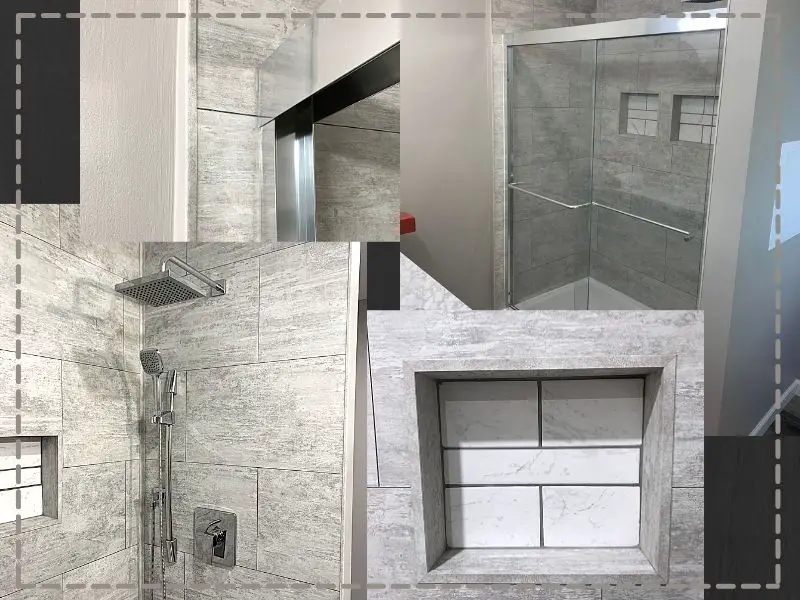*My posts may contain affiliate links, which means I may receive a small commission, at no cost to you, if you make a purchase through a link! Thank you for supporting my website!*
Last updated on February 28th, 2024 at 04:17 pm
Wondering why your project turned yellow after applying the topcoat over your Rustoleum chalk paint? Well, look no further because I have your answer!
Wood items painted with Rustoleum chalk paint can have the topcoat turn yellow if the project is not primed correctly before being painted. To fix the yellowed topcoat, seal the entire piece with stain-blocking primer prior to painting another coat of chalk paint.
Now that we’ve got the basics out of the way, let’s break into the details further so you can fix your yellowing piece of furniture and prevent it from happening again.
Let’s dive in!
Quick Navigation: How To Fix Yellowing Rustoleum Chalk Paint
- Why Did My Rustoleum Chalk Paint Top Coat Turn Yellow?
- How To Fix Yellowing Rustoleum Chalk Paint Topcoat
- Other FAQs About Fixing Yellowing Chalk Paint
- Final Thoughts
| Level Of Difficulty | Time To Complete |
|---|---|
| Easy | 2-4 Hours |
| Material List | Tool List |
|---|---|
| Zinsser stain-blocking primer | Mechanical sander |
| 120 grit sandpaper | 2-inch angled short-handle paintbrush |
| Clear Polycrylic | Fine-texture foam roller |
Why Did My Rustoleum Chalk Paint Top Coat Turn Yellow?
Most people use chalk paint over other types of paint because you can apply it to almost all surfaces without sanding or priming.
Unfortunately, one of the biggest benefits (skipping priming) is often what causes the yellowing problem.
The main reason chalk paint topcoats start to turn yellow over time is that the piece of wood was not primed before being painted.
Improper cleaning of the wood item or piece of furniture could also be the culprit. To avoid this potential problem, I always recommend cleaning your wood piece fully before sanding or painting.
If your piece of furniture has been sanded or painted before, then first clean the entire piece with TSP or Easy-Off Kitchen Degreaser found at Amazon. Then you can sand the entire piece with 120 grit sandpaper.
After you’ve sanded everything, there are a few more cleaning steps you need to take to avoid any yellowing from dirt or grease. Check out my article here for the best way to clean a sanded piece of wood or furniture before painting or staining.

If you cleaned the piece well before painting, then you can rule out this as a possible cause. The most likely reason your topcoat is turning yellow is because of the lack of primer.
Here are a few things that cause Rustoleum chalk paint topcoats to yellow when they haven’t been primed properly.
Chalk Paint Turns Yellow On Stained Wooden Surfaces
Applying chalk paint over a stained wood furniture piece without priming first is the first reason it may turn yellowish.
The work might not have been sealed correctly initially, and then the wood stain could have been activated by the water in the chalk paint.
If this happens, then the wood stain will absorb into the chalk paint and alter the color.
Unfortunately, adding more layers of chalk paint will not fix this problem because chalk paint does not have stain-blocking qualities as a good primer will.
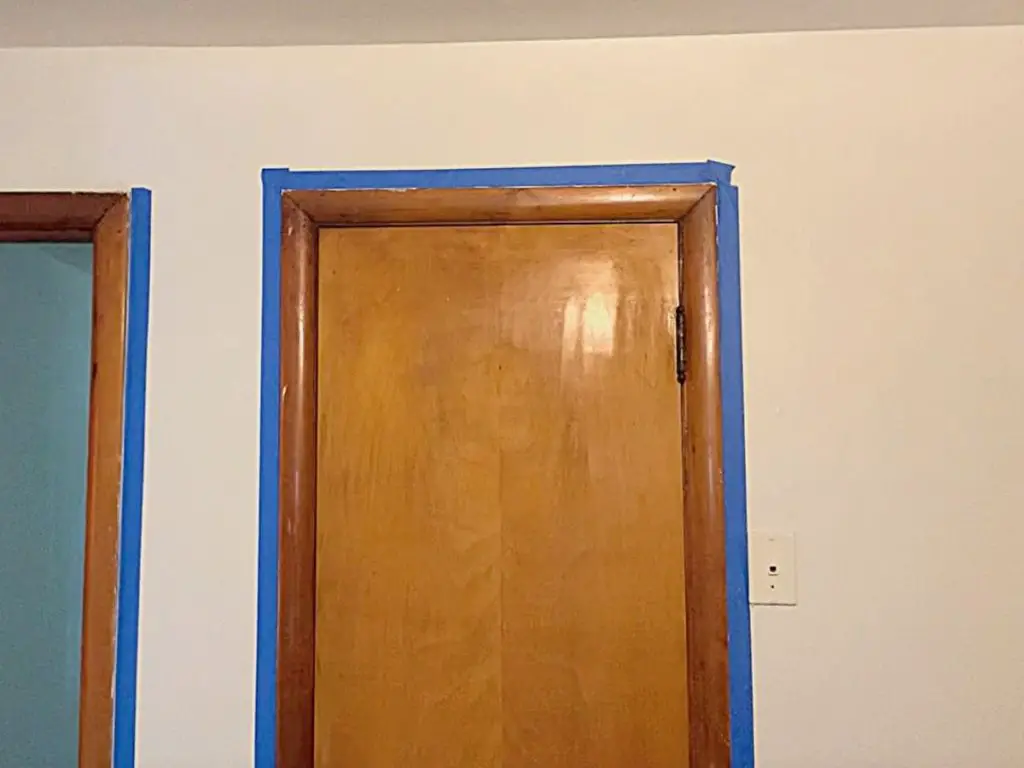
Chalk Paint Turns Yellow On Woods With High Tannins
The next possibility for the unplanned yellowing is that your project piece is made of wood with high tannins and it wasn’t primed with a stain-blocking primer.
After the paint dries, the tannins from the wood may pull to the surface through the porous chalk paint causing bleeding to occur.
This discoloring is especially noticeable in white or lighter color chalk paints. Again, prevent this bleeding yellow by first applying a primer on high tannin woods.
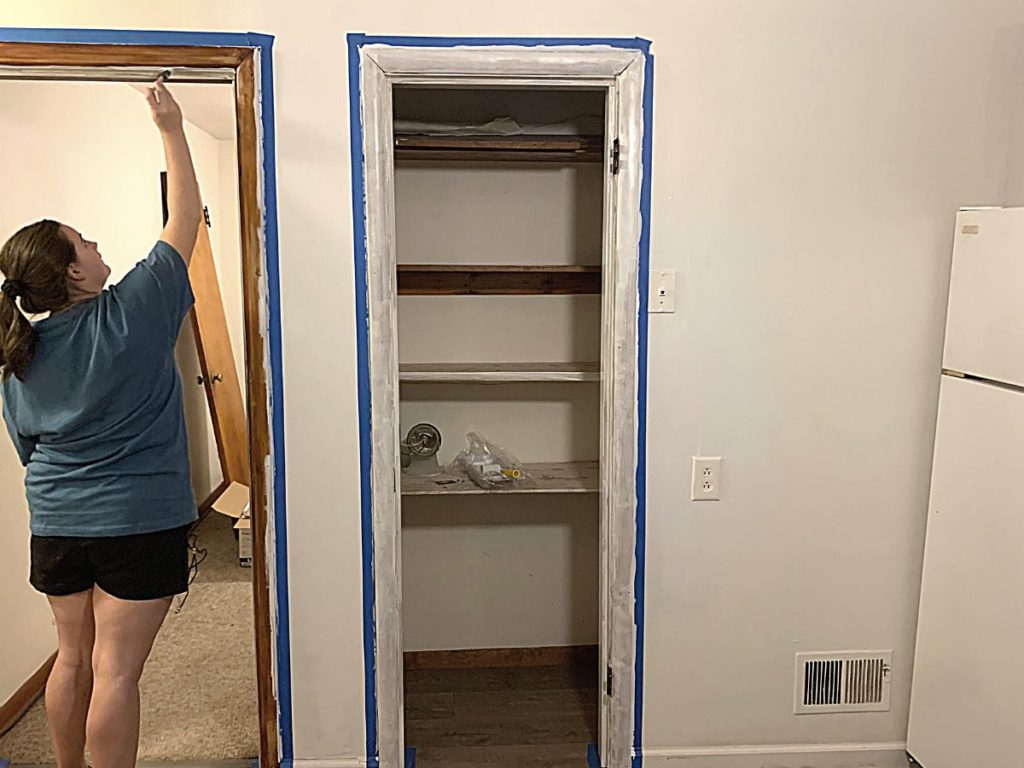
Chalk Paint Turns Yellow On Projects With Some Amber-Tinted Topcoats
The final possibility for the yellowing is that you used an amber-tinted topcoat on top of white or light-colored chalk paint.
Some topcoats have an amber tint to them that naturally yellows a little bit over time. If your chalk paint is a dark color then you will never notice this color difference.
However, the yellowing can be obvious over white or light-colored chalk paint.
To help limit the yellowing, you can mix a little bit of the chalk paint into the topcoat to help tint it more towards the actual paint color than the amber color.
This technique is not always foolproof though.
How To Fix Yellowing Rustoleum Chalk Paint Topcoat
- Clean the finished surface with Easy-Off Kitchen Degreaser found at Amazon
- Scuff sand the entire piece with 120 grit sandpaper
- Seal the wood with Zinsser primer found at Amazon
- Use this lightweight, short-handled paintbrush and fine-texture foam roller (both found at Amazon) to get a smooth finish when re-applying the chalk paint
- Sand lightly between coats of chalk paint if any drips or texture occur using 320 or higher grit sandpaper
- Wipe off any dust if sanding between coats
- Apply 2-3 coats of chalk paint
- Mix a little bit of chalk paint into the topcoat before applying it to help the topcoat blend into the paint color better
- Use MinWax’s Clear Polycrylic found at Amazon instead of polyurethane as polyurethane tends to yellow over time while Polycrylic does not
- Sand lightly between coats of Polycrylic if any drips or texture occur using 320 or higher grit sandpaper
- Wipe off any dust if sanding between coats
- Apply 2-3 coats of Polycrylic
If you follow these steps, then you can save your painted project from yellowing and prevent any more yellowing from occurring in the future.
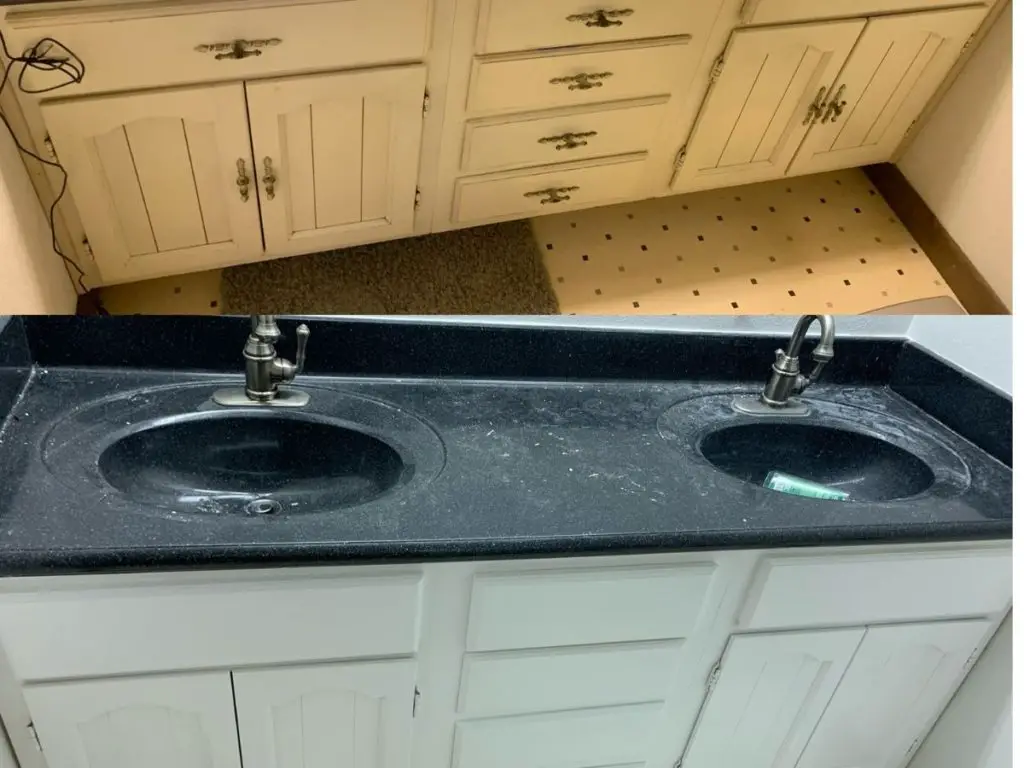
Other FAQs About Fixing Yellowing Chalk Paint
Here are some other frequently asked questions about chalk paint topcoats to help you get a better finish on your wood project.
Which Topcoat Is Best For Chalk Paint?
The Rust-Oleum Chalked Protective Topcoat is good, but it may turn yellowish over time, depending on your preparation and painting surface.
Some topcoats can create a chemical reaction with the paint underneath and cause discoloration.
My two favorite topcoats for chalk paint are MinWax’s Polycrylic and Varathane’s Ultimate Water-based Polyurethane both found at Amazon.

What’s The Difference Between Polycrylic and Polyurethane?
Polycrylics are typically water-based products, and polyurethanes are typically oil-based products.
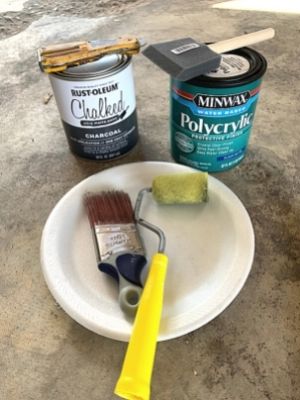
Final Thoughts On Yellowing Chalk Paint Topcoats
There you have it!
It can be a disappointment when your chalk paint project yellows after a while, even if you did apply the Rustoleum Top Coat.
Luckily it can be easily fixed by priming the project and adding another couple coats of chalk paint and water-based polyurethane.
Catch you in my next post!
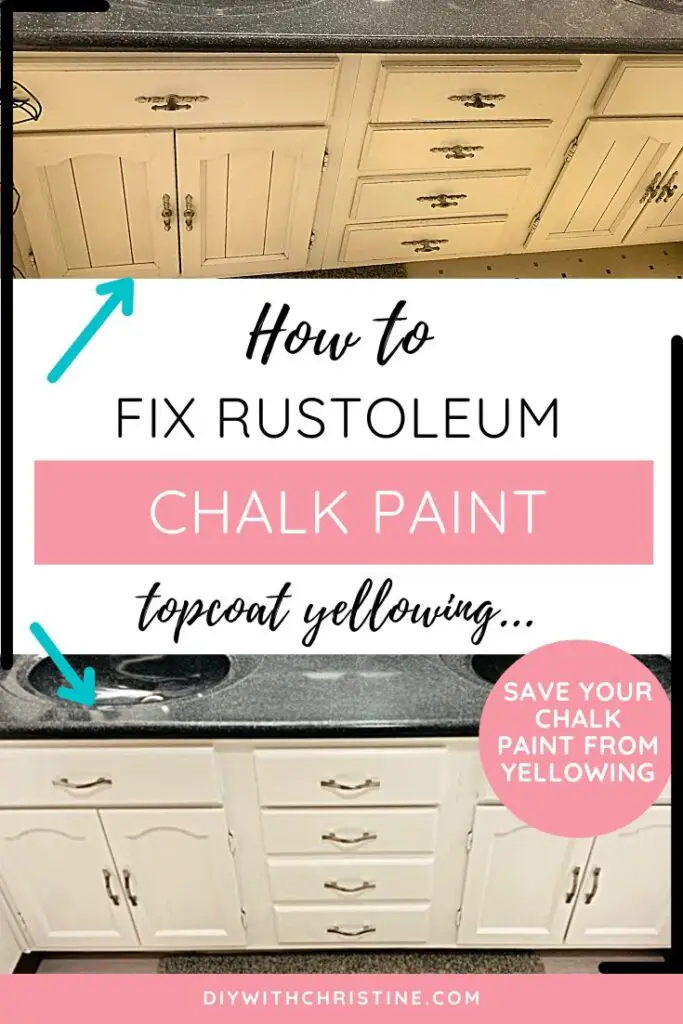
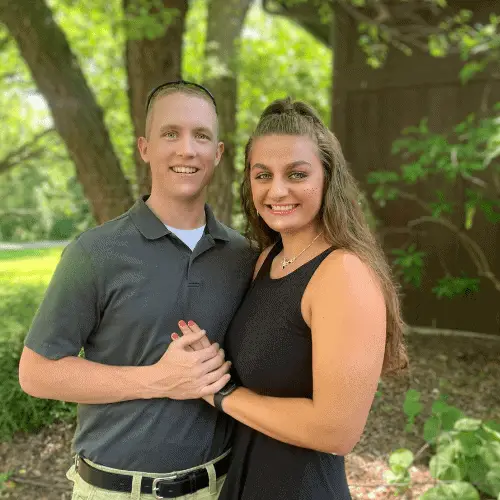
By Christine
Christine is a blogger and DIYer who tackles home renovation and decorating projects alongside her husband, Adam, for their personal residence and rental properties. Although she successfully tackles large renovation projects to avoid expensive contractor fees and bring her vision to life now, her path to success was not easy.
Go here to read her story, “From a Clueless First-Time Homebuyer To A Confident DIYer Creating Her Dream Home One Project At A Time“.
Popular Posts
DIY With Christine is a participant in the Amazon Services LLC Associates Program, an affiliate advertising program designed to provide a means for sites to earn advertising fees by advertising and linking to Amazon.com.

